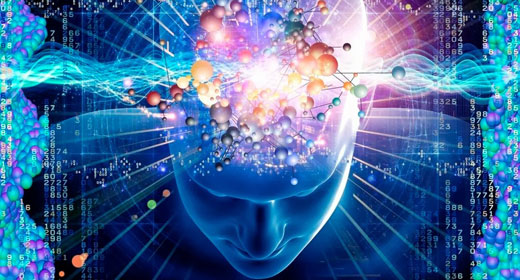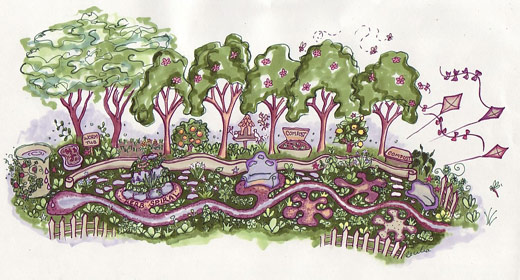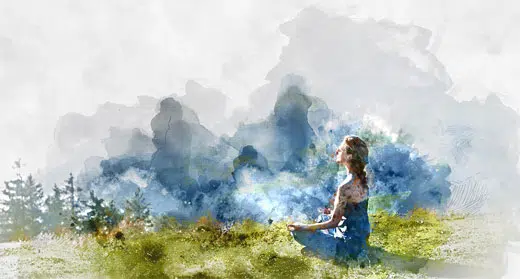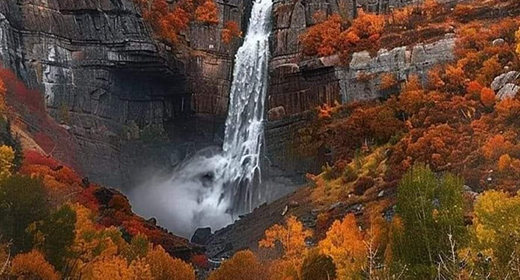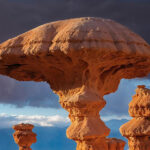by Wade Roush: MIT Technology Review’s energy editor explains the new science of extreme weather event attribution…
“You can’t attribute any specific weather event to climate change.” For years, that was the party line among meteorologists and climate scientists; while they were alarmed by global warming, they were also sensitive to the bafflingly complex and multicausal origins of events like hurricanes and droughts. But thanks to improved climate simulations, accumulating weather data, and more powerful computers, it’s now possible to model worlds with and without the greenhouse gases we’ve added to the atmosphere over the past 150 years. And that lets researchers conclude that specific weather events, such as the devastating bushfires in Australia, were—within certain upper and lower bounds—more likely and more damaging thanks to global temperature increases. For the March/April 2020 issue, Technology Review senior energy editor James Temple surveyed the work of a number of groups doing this work, including World Weather Attribution, co-led by University of Oxford professor Friederike Otto.
Wade Roush: One thing we know about the climate crisis is it makes extreme weather more likely. But can we look back at specific storms or heat waves and quantify the actual role played by global warming? Until recently, most climate scientists shied away from answering those questions. But that’s starting to change.
Friederike Otto: Because if scientists do not say anything about the role of climate change in an extreme weather event and in the world we live in today, where climate change is clearly happening, then only people with a political agenda … will give answers to the question. So we thought it’s important that we bring scientific evidence into that discussion that is happening anyway.
James Temple: I remember an editor at my previous publication saying you can’t attribute any single event to climate change. And for years, that was the stock answer that you would hear from researchers. What seems to have happened is that scientists have found a language that they can get comfortable with… talking about things in terms of statistical odds. But of course, the odds now are so large…that they are in effect saying, yeah, climate change almost certainly played a role here.
Wade Roush: In the latest issue of MIT Technology Review, energy editor James Temple looks at the new science of extreme weather event attribution, and explains how it could help us prepare for the next catastrophe. I’m Wade Roush, and this is Deep Tech.
BBC News anchor: More than 100 fires are burning across Australia’s most populous state.
DW News anchor: Fire patrols are being tested to the limit
Australian firefighter: Putting out a spot fire. The next minute, there’s a 30-meter flame on us. I mean, you just can’t keep up.
CBS This Morning anchor: Hundreds of firefighters spent Christmas Day battling the flames.
DW News anchor: And authorities say it’s just too big to put out.
BBC World News commentator: Temperatures in Australia warmer and warmer and warmer. Some Australians argue the fires are a moment of reckoning.
Wade Roush: When a devastating weather event comes along, such as Australia’s bushfires, or similar fires in California last year, it’s natural to ask whether global warming was to blame, even if there’s rarely been a satisfying yes or no response. But advances in climate modeling are changing that.
James Temple: My name’s James Temple. I’m the senior energy editor at MIT Technology Review, which actually means I mostly write and report about climate change and all the things that we need to address climate change.
Wade Roush: Including ways scientists are beginning to link human-induced warming to individual weather events… by modeling how those events might have played out differently in the absence of carbon emissions and other human activities. It’s called extreme weather event attribution.
James Temple: That’s a clunky term that refers to the studies that researchers conduct in the aftermath of events like droughts and heatwaves and hurricanes to determine the likelihood that climate change…played a role in that event happening at all or in the severity of the event. And what’s important about them is that in a in a pretty real way, they’re helping us to understand what climate change is, not what it might mean in 20 years or 50 years or a hundred years, but what it’s already doing and how it’s already increasing the risks that we’re living with here, today, now.
Wade Roush: James says this shift first caught his attention after Hurricane Harvey hammered southeast Texas in the summer of 2017.
James Temple: Kerry Emanuel, who’s a pretty noted hurricane and climate researcher at MIT, ended up making some public statements about how much climate change had changed the likelihood of an event of that magnitude. Part of what changed here is that scientists found a way to get comfortable talking about those things. They’re still not, for the most part, going to come out and say, yes, this particular storm absolutely was caused by climate change or wasn’t caused by climate change, but by doing these sorts of extreme weather attribution studies, they can say with some degree of certainty that in a world where climate change didn’t occur and a world where climate change did occur, the odds of that event happening, an event of that magnitude of severity were X percent higher than they would have been in that alternate reality.
Wade Roush: This spring, a group of researchers called World Weather Attribution put out a report asking that exact question about the fires in Australia. Their models showed that thanks to climate change, the hot, dry weather responsible for the fires was at least 30 percent more likely to strike Australia, and possibly much more likely than that. This kind of information could, in theory, help policy makers and emergency responders be more prepared for future fire seasons. In the long run it could also help nations sort out responsibility for the climate crisis, and decide who should be paying most to fix it. That’s why Technology Review named it a breakthrough technology for 2020.
Wade Roush: World Weather Attribution is co-led by a professor named Friederike Otto. She’s also the director of the Environmental Change Institute at Oxford.
Friederike Otto: So, first of all, it’s important to highlight that every extreme weather event has multiple causes. So the question of the role of climate change will never be a yes or no question. It will always be, did climate change make it more likely or less likely, or did climate change not play a role?
Friederike Otto: So when we want to find out whether climate change did play a role, we use observations and different climate models and simulate what is possible weather in the world we live in today. And because we know very well how many greenhouse gases have been added into the atmosphere since the beginning of the industrial revolution, we can take these out of the atmosphere of our climate models, and so we can simulate a world that might have been exactly as it is today, but without man-made climate change. And because the only thing that is different between these two worlds is man-made climate change, we can attribute this change, or this increase in likelihood, to climate change.
Wade Roush: Otto says assessing how climate change contributed to the fires in Australia was tough, for a bunch of reasons. First they had to decide what to measure. Should it be temperature, or rainfall, or wind speed, or soil conditions, or all of the above? In the end, they came up with a “fire weather index” that combined all these variables. Then they had to deal with the fact that existing climate models aren’t very good at predicting extreme highs in temperature, especially on a local scale, like the southeastern region of Australia, where the fires were the worst.
Friederike Otto: So we were only able to give a lower bound. So that means ultimately our headline result was that climate change made fire weather at least 30 percent more likely. Likely the role of climate change is much higher, but with the current generation of climate models, we are not able to quantify that.
Wade Roush: So, James, I have a series of questions for you that in a way they all kind of boil down to the question, so what?
James Temple: Good question.
Wade Roush: Given that we can’t actually move to these counterfactual worlds, we can’t undo climate change? What kinds of tools does this science give us?
James Temple: I think there are basically two ways that this could affect things. One is that to the degree these studies are telling us what 100-year storm or a 10-year flooding event looks like today, in the present, it helps us update those sorts of risk profiles. It is delivering very actionable information in terms of how we should build our cities and systems going forward. You know, it says pretty clearly that we shouldn’t be building any more homes in the flood zones of Houston, for instance, because it’s saying that what was once a 2000-year event is now probably more like a 100-year event.
But I think if we’re really smart about it, and you take climate attribution studies plus all the work that’s been done on climate modeling generally, it’s saying, look how much one measly degree C increase in global temperatures has already changed the world. And to me, that really underscores the importance of avoiding 2 degrees C.
Wade Roush: If we have the computing power and the years of data that allow us to attribute extreme weather events to global warming, what other kinds of attribution can we do these days? And is there a whole new science opening up here where we could actually get much more fine-grained in the way we assign responsibility for these events?
James Temple: Now you’re thinking like a lawyer. I mean, I don’t think the math is beyond us here, right? I mean, certainly we can say roughly what level of historic emissions each nation is responsible for, and I looked it up last night. The US pumped out 27 percent of global CO2 emissions from 1850 to 2014. So by that logic, is the US a quarter responsible for the X percent increase in severity of Y storm that costs Z billions in damages? I would not be surprised if some enterprising lawyers end up exploring those sorts of legal theories one day.
Wade Roush: Dr. Otto, I’m also curious whether there is resistance to attribution science…in the sense that from a policymaker’s perspective, it’s a bit of a Pandora’s box, I imagine. I mean, if you can say with a certain confidence that a hurricane or a drought or a fire was X percent more likely because of climate change, then it seems like it must also be possible to say that that same weather event was X percent more likely because the United States or the EU or Australia has burned a certain amount of fossil fuels.
Friederike Otto: Yes.
Wade Roush: So, and, in fact, I believe you published a paper in Nature Climate Change a few years ago…
Friederike Otto: Doing exactly that, yes.
Wade Roush: Yeah. So does that contribute to the debate over the place of this science?
Friederike Otto: Well, there’s definitely people who accuse us of just wanting to play blame games. Which, well I’m not sure that is really an accusation, because I don’t think that that would necessarily be a bad thing, if we would be able on the basis of these attribution studies to sue companies or states and thus force them to do more efficient climate mitigation. In my view that that is one legitimate reason to do attribution. We will not solve the climate problem by these international negotiations alone. We also need to change the way our societies are organized on all other levels toward societies that are not dependent on burning fossil fuels. And I think all these other levels, litigation and the courts can play a really important role. And if it can lead to different companies changing their business model, then that is a very powerful way of changing society.
Wade Roush: That’s it for this edition of Deep Tech. This is a podcast we’re making exclusively for MIT Technology Review subscribers, to help bring alive some of the people and ideas you’ll find in the pages of our website and our print magazine. But the first four episodes cover our annual 10 breakthrough technologies issue, and we’re making those episodes free for everyone. Deep Tech is written and produced by me and edited by Michael Reilly and Jennifer Strong. Our theme is by Titlecard Music and Sound in Boston. Special thanks this week to James Fox, Friederike Otto, David Rotman, and James Temple. I’m Wade Roush. Thanks for listening, and we hope to see you back here for our next episode in two weeks.

